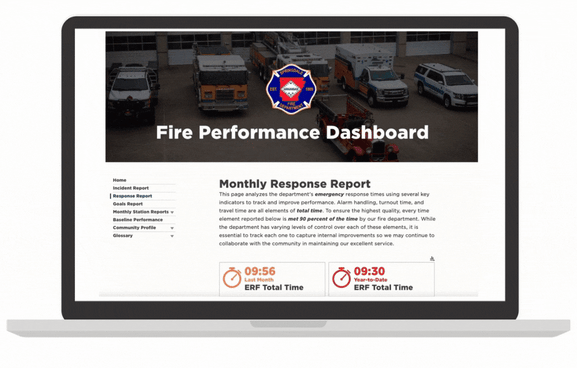For the more than 200 million Americans living in rural areas, one fire department might cover miles and miles of land. At the spike of COVID-19, EMS volume rose to levels never before seen while the effect of the virus on staffing left safety providers with a much-reduced ability to help. Looking at these conditions, it is no secret that this past year has served up some unique challenges for those in risk reduction and fire safety.
Data always seems to be the first thing to go in a crisis. It is seen and treated as a luxury. After all, shouldn't addressing the emergency at hand take priority over improvement analysis of the future? With new budget constraints, it seems like the only move. However, our partners in fire performance have made crucial discoveries this past year that have helped them address heightened calls, improve response time, and truly understand how COVID-19 has impacted fire safety in their communities.
In stressful times it seems neccessary to pick old ways over new insights. With mySidewalk, you don't have to choose. Here are the top discoveries our partners in fire performance have made in 2020.
Alarm handling is going up.
Alarm handling is how long dispatch takes to notify public safety agencies to address an emergency. Fire departments have seen that the times to dispatch a responder increased since the pandemic began. This unexpected increase adds to the Total Response Time. With many things taking citizens' attention, they can grow desensitized to fire alarms and forget to keep them up to date, increasing their likelihood to be unprepared for a fire at a time when total response time has increased in many communities.
Fires have increased during 'stay at home' orders.
According to the National Fire Protection Association, cooking is the leading cause of home fires and fire injuries and they’re becoming more prevalent during this pandemic. Structure fires require higher amounts of personnel, which puts an extra crunch with staff quarantined.
EMS calls went down, but true emergencies rose.
While EMS professionals are responding to fewer calls, the calls they do recieve are for more severe emergencies rather than benign scares. During COVID-19, an estimated 41% of U.S. adults had delayed or avoided routine medical care. When people aren't receiving care regularly, the chance of them experiencing a serious medical event rises, along with the need for an ambulance. Paramedics are currently seeing what it would be like if people only called 911 when they needed an ambulance.
With us handling your data analysis, there's more time to focus on vaccine rollout.
Public service officials around the country, including those in public safety, are busy managing COVID-19 vaccine rollout. With so many more demands for your time, there's no one to handle data analysis. That's where we come in. Our Fire Performance Dashboard measures key performance indicators for incident counts, response times, and goals met, so you don't have to sweep them aside during a crisis.
If you've never taken a deeper look at your performance, we'll help you get started by comparing your current stats with your Historic Data. With up to four years of your past information, you can get the insights neccesary to improve the future.

See it for yourself.
Let's connect and schedule a demo, so you can see what better fire data analytics looks like firsthand.

Meanwhile, here's a Fire Performance Dashboard example.
No Comments Yet
Let us know what you think